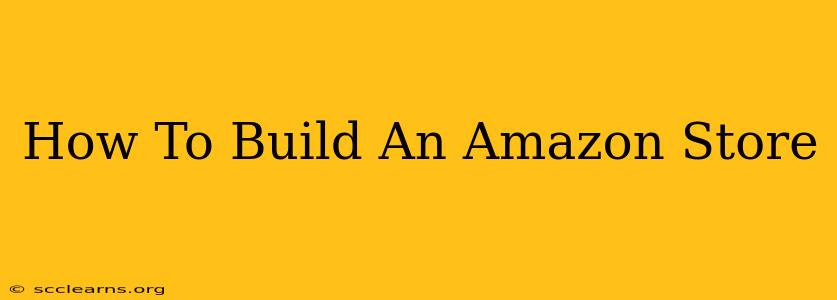Building a thriving Amazon store requires more than just listing products. It's about crafting a brand experience that resonates with customers and drives sales. This comprehensive guide will walk you through the process, from initial setup to ongoing optimization.
Step 1: Choosing Your Niche and Products
Before diving in, thorough market research is paramount. What products are in demand? What are your competitors doing? What unique value can you offer?
Finding a Profitable Niche:
- Identify your interests: What are you passionate about? Passion fuels persistence, crucial for long-term success.
- Analyze market trends: Utilize tools like Jungle Scout, Helium 10, or Sonar to uncover trending products and assess competition.
- Assess profitability: Consider factors like product cost, shipping fees, Amazon fees, and potential profit margins.
- Look for low competition: While popular niches offer higher potential, starting in a less saturated market can provide a faster path to success.
Sourcing Your Products:
- Private label: Design your own product and have it manufactured. This offers greater control over quality and branding but requires a larger upfront investment.
- Wholesale: Purchase products in bulk from a supplier and resell them on Amazon. This requires less upfront capital but offers less control.
- Dropshipping: Partner with a dropshipping supplier who handles storage and shipping. This requires minimal upfront investment but often has lower profit margins.
Step 2: Setting Up Your Amazon Seller Account
Choosing the right seller account type is critical. There are two main options:
- Individual: Suitable for sellers with fewer than 40 sales per month. Lower monthly fees but higher per-item fees.
- Professional: Recommended for sellers expecting more than 40 sales per month. Higher monthly fees but lower per-item fees.
Once you've chosen your account type, you'll need to provide necessary information, including your business details, tax information, and banking details. Ensure you comply with all Amazon's Seller Policies.
Step 3: Creating Compelling Product Listings
Your product listing is your storefront on Amazon. It must be persuasive and informative. Key elements include:
- High-quality images: Professional, lifestyle images showing your product in use.
- Detailed product description: Highlight key features, benefits, and specifications using relevant keywords.
- Competitive pricing: Research competitor pricing to find a sweet spot that balances profitability and competitiveness.
- Effective keywords: Utilize relevant keywords throughout your listing to improve search visibility. Use tools like Sonar or MerchantWords to identify the best keywords.
Step 4: Building Your Brand
Branding sets you apart from the competition. Consider:
- Logo design: A professional logo creates a memorable visual identity.
- Consistent branding: Maintain consistent messaging, colors, and imagery across all your listings and marketing materials.
- Customer service: Exceptional customer service builds loyalty and positive reviews.
Step 5: Marketing Your Amazon Store
Driving traffic to your store requires a multi-faceted approach:
- Amazon PPC advertising: Utilize Amazon's pay-per-click advertising platform to reach a wider audience.
- Social media marketing: Leverage social media platforms like Facebook, Instagram, and Pinterest to promote your products and engage with customers.
- Influencer marketing: Partner with relevant influencers to promote your products to their followers.
- Email marketing: Build an email list and send targeted email campaigns to nurture leads and promote new products.
Step 6: Analyzing and Optimizing Your Store
Continuous monitoring and optimization are essential for long-term success.
- Track key metrics: Monitor your sales, conversion rates, and customer feedback.
- Analyze your data: Use Amazon's analytics tools to identify areas for improvement.
- A/B testing: Experiment with different listing variations to see what resonates best with customers.
- Stay updated: Amazon's policies and algorithms constantly evolve, so staying informed is crucial.
Building a successful Amazon store is a journey, not a destination. By following these steps and continuously refining your strategy, you can create a thriving online business. Remember, focus on providing value to your customers, and success will follow.

